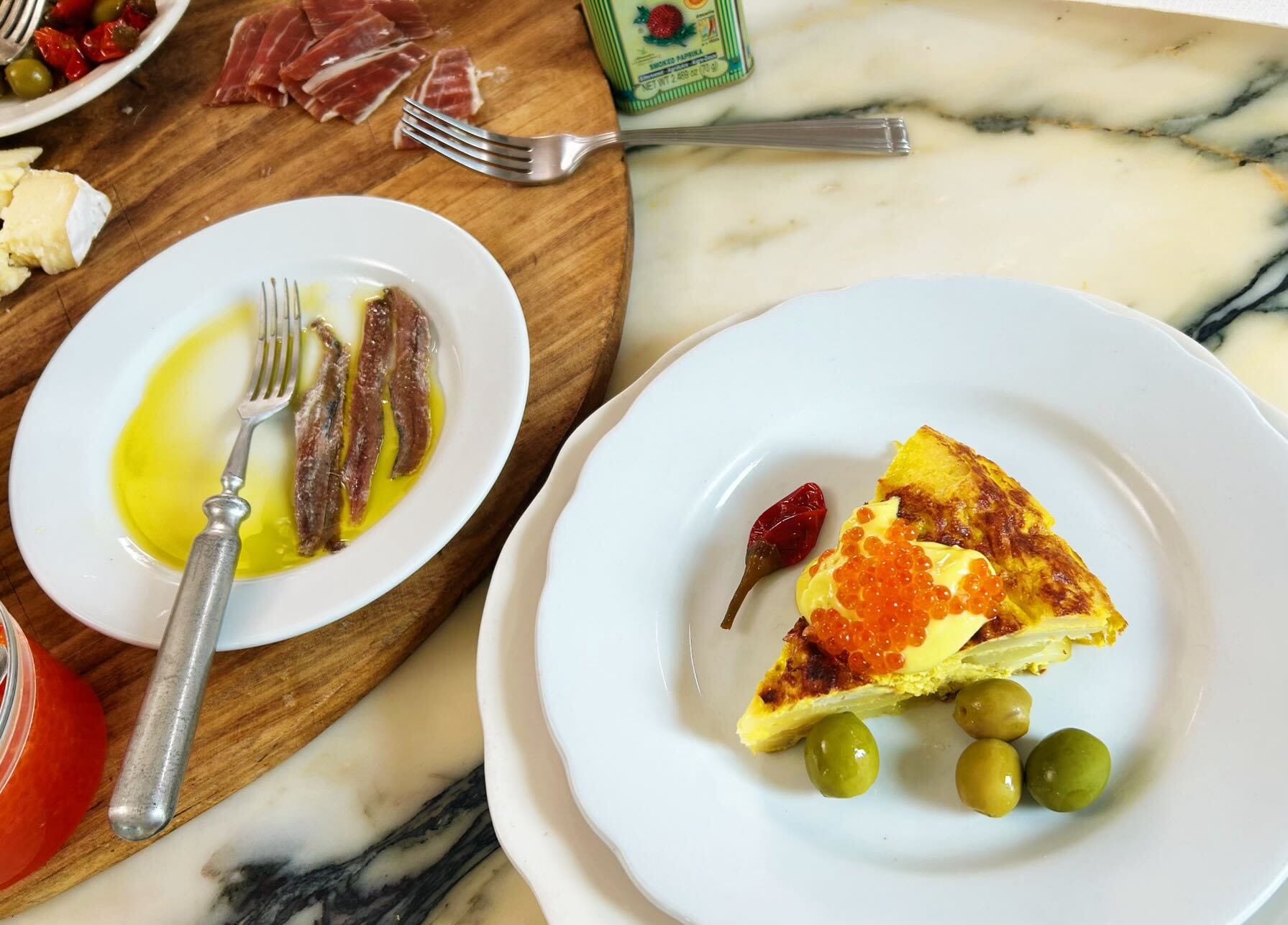
Spanish Tortilla: more a feeling than a recipe
also, a perfect snack
Hello and happy Tuesday. On today’s episode of Home Movies we’re making a Spanish Tortilla. Something I love to eat but only in the last few years learned how to make, and even still, I’m not “the best” at making it (and that’s okay!). My friend Lauren, who is actually quite good at it, taught me how to make one during the early days of the pandemic when we were quarantining together (four years later, what a wild phrase to say).
She’d make them very casually, which I admired, because the whole thing seemed very complicated to me. She is also a very calming and casual cook, never disorganized or chaotic, and the tortilla is actually the perfect stage to display such a vibe. When I asked how many potatoes, or how long to cook them or how many eggs, she’d answer in true “grandma” fashion, which is to say: “A few. Until they’re done. Until it feels like you have enough but not too many.” She’s not wrong, though. Spanish Tortilla is one of those dishes that for those who make them regularly, probably never used a recipe, and that’s likely how they were taught as well. Spanish Tortillas are maybe more about feeling then they are about numbers and measurements. I like this kind of cooking, as it’s the kind of cook that I am, that Lauren is. If I didn’t do it professionally, I’d never write down a single thing, almost certainly never doing the same thing twice.
These are the recipes I find the hardest to write because of how feelings/instinct based they are, and truthfully, there really is more than a little room for error (which is to say: potatoes cooked in olive oil baked with eggs taste good, in many permutations). Not to say you should just ignore this and do whatever you want, but more to encourage you to feel it out as you cook through it, knowing that the next time it might feel a little different. The potatoes a little waxier, the eggs a little larger, the skillet a little smaller, the heat a little lower, whatever the differences may be. Much like a pie crust or biscuits, you learn a lot each time you make a Spanish Tortilla and that's likely why I love making them. Tricks and little techniques that reveal themselves to you that are special to your physical space, your personal touch, your specific preferences, no two ever really alike. In a world where we love to have the same exact thing as everyone else, isn’t it so special to have something so perfectly different?

Anyway, there are lots of ways a Spanish Tortilla can be made and eaten. Thick, towering slices. Thin, quivering omelets. With onions, without. Alongside aioli or with one perfect anchovy. This is just one way, a way that I love and think you’ll be able to effortlessly do at home. From there, make another one. And then another. Do one thing differently if you want. Increase the heat. Season with pepper. Don’t flip it. Add another egg. Or, change nothing. Whatever you do, I hope you fall in love with the process as much as the eating. Again and again, always a new chance to find your way more towards the perfect center of your Spanish Tortilla making and eating experience. For the record, this is mine, and I’d be happy if it was yours, too.
The Video
For the full recipe, read on.
